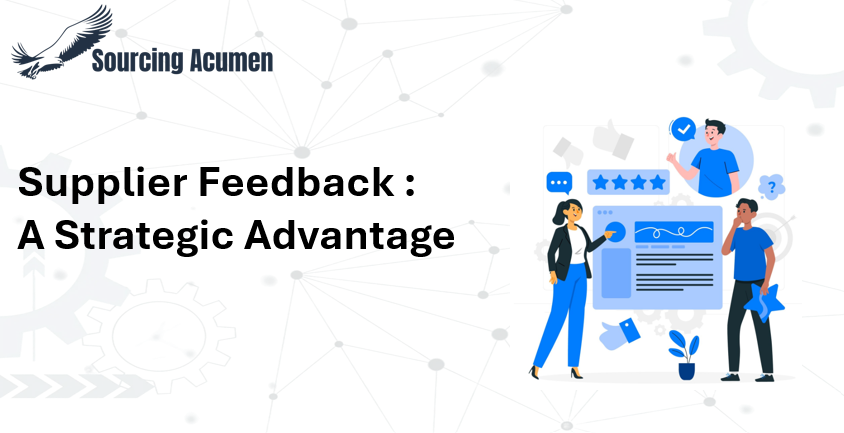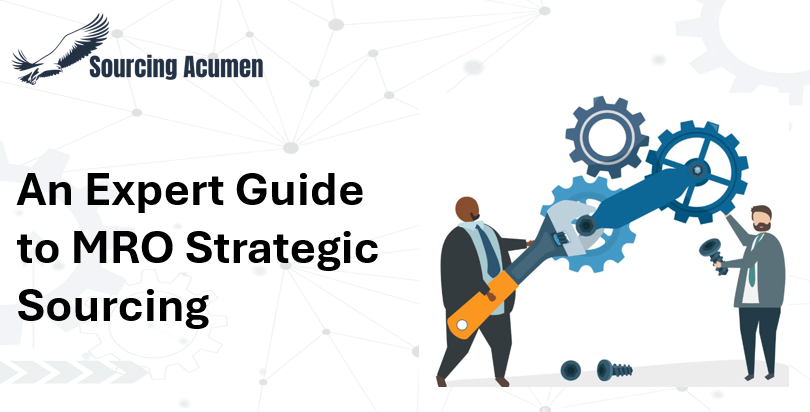Supplier Feedback: The Strategic Advantage Procurement Leaders Can’t Afford to Miss

In sourcing and procurement, we often focus on price, total cost of ownership, service levels, and compliance. But there’s one powerful tool that’s frequently overlooked : Supplier Feedback.
Thoughtful feedback leads to better bids, stronger supplier relationships, and long-term improvement. It helps suppliers tailor their responses more precisely and view you as a collaborative partner, not just a decision-maker.
Why Supplier Feedback Matters
Supplier feedback does more than close the loop—it drives better outcomes across the board:
- Improves supplier performance – Competitive suppliers fine-tune their proposals, while others identify clear areas to improve.
- Builds transparency and trust – Suppliers stop seeing sourcing events as black boxes and understand how they measure up.
- Reduces subjectivity – Clear documentation helps buyers make fact-based decisions.
- Encourages collaboration – When suppliers understand your goals, they can offer relevant ideas and improvement
What Good Feedback Looks Like
Strong feedback is clear, timely, and focused. Here are five key questions to guide your process:
1. How Much Detail Should Feedback Include?
For simple RFPs, a summary may be enough. But for complex events with many parts, suppliers need detailed feedback. This helps them improve pricing, coverage, and service.
- Are you covering only pricing, or also quality, service, and product fit?
- Can you share part-level comparisons? Suppliers often find this helpful, even when the message is tough.
Most e-sourcing platforms support structured, detailed feedback.
2. What Is the Basis for Your Feedback?
- Are your comparisons valid and consistent?
- Have you accounted for variables like location, logistics, and tariffs?
- Have you used benchmarks or realistic internal standards?
Well-supported feedback builds credibility.
3. How Will Suppliers React?
- Will the feedback be seen as constructive or dismissive?
- Does it provide helpful context?
- Is the tone respectful and encouraging?
Even difficult messages can be shared in a way that invites future engagement.
4. How Should You Deliver Feedback?
Suppliers want timely responses. Long silences reduce engagement.
- Can you respond within a week or two?
- Would a written summary, a call, or both work best?
- Are you using a tone that encourages continued collaboration?
Timely communication helps keep suppliers engaged.
5. Are You Listening to the Supplier’s Perspective?
Feedback is most valuable when it’s two-way:
- What is the supplier aiming for?
- How do they see the partnership evolving?
- Are there challenges on their end you should understand?
Make Feedback Part of Every RFP
Whether it’s a $1M or $100M RFP, feedback should be part of the process:
- Share specific, data-backed pricing comparisons
- Highlight gaps in bid coverage
- Offer insights on qualitative factors like service and performance
- Encourage innovation and improvement ideas
- Schedule a follow-up call to discuss the feedback and listen to the supplier’s views
This helps build accountability and long-term supplier value.
The Benefits of Giving Feedback
What do you gain by prioritizing supplier feedback?
- Better competition in future events
- More aligned and relevant proposals
- Shorter sourcing timelines
- Stronger, more engaged supplier relationships
- A reputation as a transparent and collaborative organization
It all adds up to better results and smoother processes.
Final Thought: Feedback as a Strategic Tool
Sometimes, the most effective sourcing tool isn’t a new system or negotiation tactic – it’s a meaningful conversation.
Next time you close an RFQ, ask: Have we given our suppliers the insight they need to improve?
Because at the core of procurement success is transparency and feedback brings that to life.
Want to simplify and improve your supplier feedback process?
Sourcing Acumen makes it easy to deliver clear, structured, and meaningful feedback through an integrated e-sourcing platform




